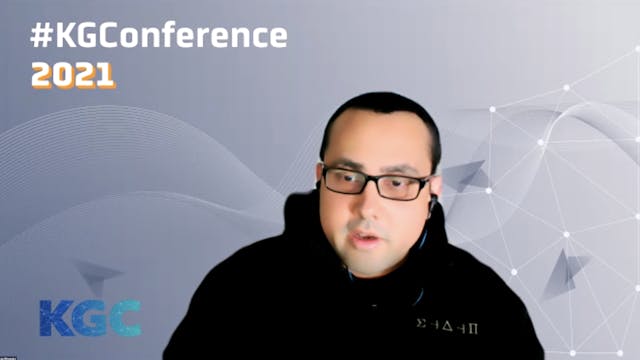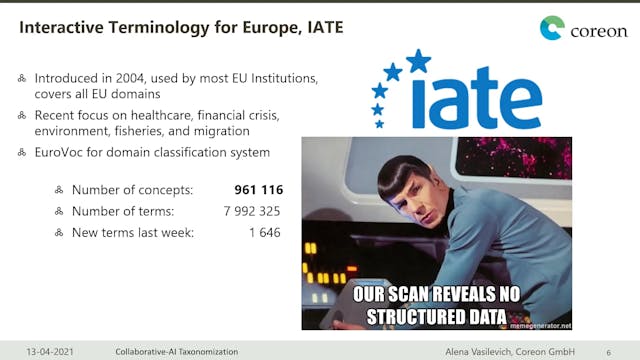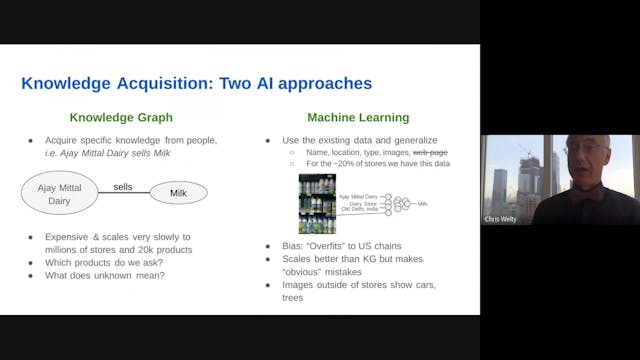Mike Welch | Serving A Web Scale Knowledge Graph
KGC 2021
•
19m
The Yahoo Knowledge Graph powers entity data for user experiences across multiple products at Verizon Media, from search to media to ads. Nodes in the knowledge graph correspond to real world entities: people, places, movies, sports teams, and so on. The edges represent semantic relationships between these entities. A comprehensive entity experience requires collecting a use-case specific subgraph around an entity node in the graph and combining it with dynamic and multimedia content.
A "knowledge panel" for a public company on a web search results page might include basic data like the company's founders and number of employees, combined with a realtime stock quote and relevant images. Other use cases, like a finance-focused website, may prefer to include additional detailed information like the board members, other companies those board members represent, revenue numbers, top competitors, and more. Legacy serving systems typically pre-collected and exposed a static view of an entity, which limited the ability for clients to traverse the graph or adapt the user experience for different contexts without offline preprocessing. They also required clients to implement a more complex series of requests to fetch partial data, extract dependencies, and query additional services to stitch together their full experience.
In this talk we will take you through our experience moving away from serving these static subgraph views with independent services and client side processing. We will describe how we addressed the shortcomings of such a system and built a federated, realtime, web-scale graph querying framework with GraphQL on top of Amazon Neptune, Vespa, and third party APIs. Our unified graph approach has enabled customer teams to experiment, rapidly iterate over their designs, and easily power rich experiences by bringing together all the relevant data under a single request.
Up Next in KGC 2021
-
Ryan Wisnesky | How To Optimally Merg...
In this talk we describe a new technique for merging knowledge graphs: translating the knowledge graph schemas into categories and the knowledge graph data into functors, then applying the "co-limit/pushout" construction from a branch of mathematics called category theory to merge these categorie...
-
Alena Vasilevich | Benefits Of Collab...
In the realm of data-driven businesses, structured data, being highly organized and easily understood by machines, is a valuable resource. IATE, with almost one million concepts storing multilingual terms and metadata, holds a large part of the textual knowledge of the EU. However, it can only be...
-
Chris Welty | Shopping Sense: Bringin...
Knowledge Graphs (KGs) continue to penetrate the industrial world after Google's famous "things not strings" was used to explain their acquisition of FreeBase ten years ago. While many KGs exist, they are by and large little more than "entity catalogs", missing entirely the links between those e...



